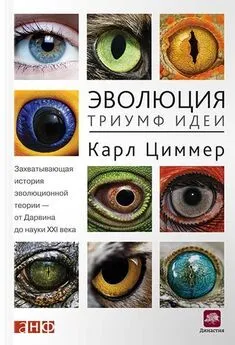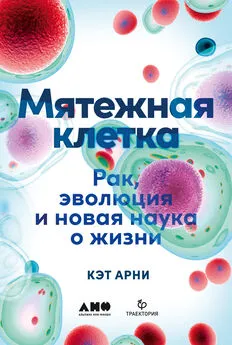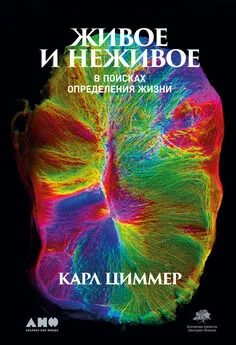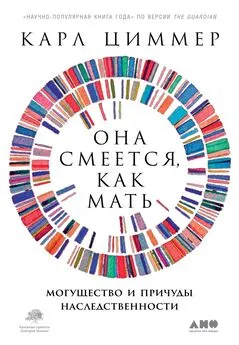Карл Циммер - Микрокосм. E. coli и новая наука о жизни
- Название:Микрокосм. E. coli и новая наука о жизни
- Автор:
- Жанр:
- Издательство:Альпина нон-фикшн
- Год:2013
- Город:Москва
- ISBN:978-5-91671-269-8, 978-0-30-27686-5;
- Рейтинг:
- Избранное:Добавить в избранное
-
Отзывы:
-
Ваша оценка:
Карл Циммер - Микрокосм. E. coli и новая наука о жизни краткое содержание
E. coli —
Интересно, что
— общественный микроб. Автор проводит удивительные и тревожные параллели между жизнью
и нашей собственной жизнью. Он показывает, как этот микроорганизм меняется практически на глазах исследователей, раскрывая перед их изумленным взором миллиарды лет эволюции, закодированные в его геноме.
Издание подготовлено при поддержке Фонда Дмитрия Зимина «Династия»
Династия
Фонд некоммерческих программ «Династия» основан в 2001 г. Дмитрием Борисовичем Зиминым, почетным президентом компании «Вымпелком». Приоритетные направления деятельности Фонда — поддержка фундаментальной науки и образования в России, популяризация науки и просвещение. В рамках программы по популяризации науки Фондом запущено несколько проектов. В их числе — сайт elementy.ru, ставший одним из ведущих в русскоязычном Интернете тематических ресурсов, а также проект «Библиотека «Династии» — издание современных научно — популярных книг, тщательно отобранных экспертами — учеными. Книга, которую вы держите в руках, выпущена в рамках этого проекта.
Микрокосм. E. coli и новая наука о жизни - читать онлайн бесплатно ознакомительный отрывок
Интервал:
Закладка:
Frost, L. S., R. Leplae, A. O. Summers, and A. Toussaint. 2005. Mobile genetic elements: The agents of open source evolution. Nat Rev Microbiol 3 (9):722-32.
Gamage, S. D., A.К. Patton, J. F. Hanson, and A. A. Weiss. 2004. Diversity and host range of Shiga toxin — encoding phage. Infect Immun 72 (12):7131—39.
Gamag e, S. D., A. K. Patton, J. E. Str asser, C. L. Chalk, and A. A. Weiss.
2006. Commensal bacteria influence Escherichia eoli 0157: H7 persistence and Shiga toxin produc- tion in the mouse intestine. Infect Immun 74 (3):1977-83.
Gamage, S. D., J. E. Strasser, C. L. Chalk, and A. A. Weiss. 2003. Nonpathogenic Escherichia eoli can contribute to the production of Shiga toxin. Infect Immun 71 (6):3107—15.
Gardner, A., S. A. West, and A. Buckling. 2004. Bacteriocins, spite and virulence. ProcBiol Sei 271 (1547):1529—35.
Gardner, T. S., C. R. Cantor, and J. J. Collins. 2000. Construction of a genetic toggle switch in Escherichia eoli. Nature 403 (6767):339-42.
Ge, F., L. S. Wang, and J. Kim. 2005. The cobweb of life revealed by genome‑scale esti- mates of horizontal gene transfer. PLoS Biol
3 (10):e316.
Gelman, S. A. 2004. Psychological essentialism in children. Trends Cogn Sei 8 (9):404-9.
George, R. P., and A. Gomez‑Lobo. 2005. The moral status of the human embryo. PerspectBiol Med 48 (2):201-10.
Gesteland, Raymond F., Thomas Cech, and John F. Atkins. 2006. The RNA world: The nature of modern RNA suggests a prebiotic RNA. 3rd ed. Cold Spring Harbor Monograph Series 43. Cold Spring Harbor, N. Y.: Cold Spring Harbor Laboratory Press. Ghannoum, Mahmoud A., and George A. O’Toole. 2004. Microbial biofilms. Washington, D. C.: ASM Press.
Gladman, B., L. Dones, H. F. Levison, andJ. A. Burns. 2005. Impact seeding and reseed- ing in the inner solar system. Astrobiology 5 (4):483-96.
Goehring, N. W., and J. Beckwith. 2005. Diverse paths to midcell: Assembly of the bacterial cell division machinery. Curr Biol 15
(13):R514-26.
Gorvel, J. P. 2006. Microbiology: Bacterial bushwacking through a microtubule jungle. Science 314 (5801):931—32.
Gould, Stephen Jay. 1989. Wonderful life: The Burgess Shale and the nature of history. New York: W. W. Norton.
Graham, J. P., J. J. Boland, and E. Silbergeld. 2007. Growth‑promoting antibiotics in food animal production: An economic analysis. Public Health Reports 122 (l):79–87. Gray, C. H., and E. L. Tatum. 1944. X‑ray induced growth factor requirements in bacteria. Proc Natl Acad Sei USA 30 (12):404-10.
Haldane, J. B. S. 1923. Daedalus; or, Science and the future: A paper read to the Heretics,
Cambridge, on February 4 th, 1 9 23. http://www.cscs.umich.edu/~crshalizi/Daedalus.html; accessed October 24,2007.
Hall, Stephen S. 2002. Invisible frontiers: The race to synthesize a human gene. New York: Oxford University Press.
Harold, F. M. 2005. Molecules into cells: Specifying spatial architecture. Microbiol MolBiol Rev 69 (4):544-64.
Hartwig, Mark. 2002. Whose comfortable myth? Focus on the Family, June 2002.
Heitkamp, M. A., J. F. Kane, P. J. Morris, M. Bianchini, M. D. Hale, and G. Bogosian. 1993. Fate in sewage of a recombinant Escherichia coli K-12 strain used in the commercial production of bovine somatotropin./ Ind Microbiol 11 (4):243-52.
Hejnova, J., U. Dobrindt, R. Nemcova, C. Rusniok, A. Bomba, L. Frangeul, J. Hacker, P. Glaser, P. Sebo, and C. Buchrieser. 2005. Characterization of the flexible genome complement of the commensal Escherichia coli strain A0 34/86 (083: K24: H31). Microbiology 151 (pt. 2):385-98.
Herring, C. D., A. Raghunathan, C. Hцnisch, T. Patel, M. K. Applebee,
A. R. Joyce, T. J. Albert, F. R. Blattner, D. van den Boom, C. R. Cantor, and
B. O. Palsson. 2006. Comparative genome sequencing of Escherichia coli allows observation of bacterial evo- lution on a laboratory timescale. Nat Genet 38 (12):1406—12.
Hershey, A. D., and M. Chase. 1952. Independent functions of viral protein and nucleic acid in growth of bacteriophage. J Gen Physiol 36 (1):39–56.
Higgins, Norman Patrick. 2005. The bacterial chromosome. Washington, D. C.: ASM Press.
Holmes, Frederick Lawrence. 2001. Meselson, Stahl, and the replication ofDNA: A history of the “most beautiful experiment in biology.” New Haven: Yale University Press.
Hou, Shaobin, Jimmy H. Saw, Kit Shan Lee, Tracey A. Freitas, Claude Belisle, Yutaka Kawarabayasi, Stuart P. Donachie, Alla Pikina, Michael Y. Galperin, Eugene V. Koonin, Kira S. Makarova, Marina V. Omelchenko, Alexander Sorokin, Yuri I. Wolf, Qing X. Li, Young Soo Keum, Sonia Campbell, Judith Denery, Shin‑Ichi Aizawa, Satoshi Shibata, Alexander Malahoff, and Maqsudul Alam. 2004. Genome sequence of the deep‑seaproteobacterium I diomarina loihiensis reveals amino acid fermen- tation as a source of carbon and energy. Proc Natl Acad Sei USA 101 (52):18036-41.
Humes, Edward. 2007. Monkey girl: Evolution, education, religion, and the battle for America’s soul. New York: Ecco.
Inoue, T., R. Shingaki, S. Hirose, K. Waki, H. Mori, and K. Fukui. 2007. Genome‑wide screening of genes required for swarming motility in Escherichia coli K-12 .JBacte- riol 189 (3):950—57.
Jackson, David Archer, and Stephen P. Stich. 1979. The recombinant DNA debate. Englewood Cliffs, N. J.: Prentice‑Hall.
Jacob, Franзois. 1995. The statue within: An autobiography. Cold Spring Harbor, N. Y.: Cold Spring Harbor Laboratory Press.
Jennison, A. V., and N. K. Verma. 2004. Shigella flexneri infection: Pathogenesis and vaccine development. FEMS Microbiol Rev 28 (1):43–58.
Jones, Nancy. 2006. Round three — “mixing and matching” biological building blocks: Mouse‑human chimeras are here! Center for Bioethics and Human Dignity, http://www.cbhd.0rg/res0urces/b iotech/jones_2006-01-20.htm.
Jones, Shari A., F. A. Chowdhury, et al. 2007. Respiration of Escherichia eoli in the mouse intestine. Infect Immun 75:4891-99.
Judson, Horace Freeland. 1996. The eighth day of creation: Makers of the revolution in biology. Expanded ed. Cold Spring Harbor, N. Y.: Cold Spring Harbor Laboratory Press.
Jun, S., and B. Mulder. 2006. Entropy‑driven spatial organization of highly confined polymers: Lessons for the bacterial chromosome. Proc Natl Acad Sei USA 103 (33):12388-93.
Kalir, S., S. Mangan, and U. Alon. 2005. A coherent feed‑forward loop with a SUM input function prolongs flagella expression in Escherichia eoli. Mol SystBiol 1:2005.0006.
Kaper, J. B. 2005. Pathogenic Escherichia eoli. IntJMed Microbiol 295 (6–7):355—56.
Karch, H., P. I. Tarr, and M. Bielaszewska. 2005. Enterohaemorrhagic Escherichia eoli in human medicine. Int J Med Microbiol 295 (6–7):405-18.
Karp, Р. D., I. M. Kessler, A. Shearer, et al. 2007. Multidimensional annotation of the Escherichia coli. K-12 genome. Nucleic Acids Res 35:7577-90.
Kass, Leon. 1997. National Bioethics Advisory Commission. Testimony of March 14.
CyberCemetery. University of North Texas Libraries. http://govinfo.library.unt.edu/nbac/transcript§/1997/3-14-97.pdf.
Kass, Leon, and James Q. Wilson. 1998. The ethics of human cloning. Washington, D. C.: ΑΕΙ Press.
Kerr, B., M. A. Riley, M. W. Feldman, and B. J. Bohannan. 2002. Local dispersal promotes biodiversity in a real‑life game of rock‑paper- scissors. Nature 418 (6894):171-74.
Kirkup, В. C., and M. A. Riley. 2004. Antibiotic‑mediated antagonism leads to a bacterial game of rock‑paper‑scissors in vivo. Nature 428 (6981):412-14.
Kobayashi, 1.2001. Behavior of restriction‑modification systems as selfish mobile ele- ments and their impact on genome evolution. Nucleic Acids Res 29 (18):3742-56. Krawinkel, M. B. 2007. What we know and don’t know about Golden Rice. Nat Biotechnol 25 (6):623.
Krimsky, Sheldon. 1982. Genetic alchemy: The social history of the recombinant DNA controversy. Cambridge, Mass.: MIT Press.
Kropotkin, Petr Alekseevich. 1919. Mutual aid: A factor of evolution. New York: Alfred
A. Knopf. Kurata, H., H. El‑Samad, R. Iwasaki, H. Ohtake, J. C. Doyle, I. Grigorova, C. A. Gross, and M. Khammash. 2006. Module‑based analysis of robustness tradeoffs in the heat shock response system. PLoS ComputBiol 2 (7):e59.
Kusseil, E., R. Kishony, N. Q. Balaban, and S. Leibler. 2005. Bacterial persistence: A model of survival in changing environments. Genetics 169 (4):1807-14.
La Duc, M. T., K. Venkateswaran, R. Sumner, and D. Pierson. 2004. Characterization and monitoring of microbes in the international space station drinking water. Beacon eSpace. Jet Propulsion Laboratory, http://hdl.handle.net/2014/37245.
Lamarck, Jean Baptiste Pierre Antoine de Monet de. 1984. Zoological philosophy: An exposition with regard to the natural history of animals. Chicago: University of Chicago Press.
Lambert, C., K. J. Evans, R. Till, L. Hobley, M. Capeness, S. Rendulic, S. C. Schuster, S. Aizawa, and R. E. Sockett. 2006. Characterizing the flagellar filament and the role of motility in bacterial prey‑penetration by Bdellovibrio bacteriovorus. Mol Micro- biol 60 (2):274-86.
Lawrence, J. G., and H. Ochman. 1998. Molecular archaeology of the Escherichia eoli genome. Proc Natl Acad Sei USA 95 (16):9413—17.
Lawrence, S. 2007a. Agbiotech booms in emerging nations. Nat Biotechnol 25 (3):271.
2007b. State of the biotech sector — 2006. Nat Biotechol
25:706.
Lederberg, J. 1946. Bacterial genetics. Joshua Lederberg: Biomedical Science and the Public Interest. National Library of Medicine, http://profiles.nlm.nih.gov/hmd/lederberg/bacterial/html.
1960. Exobiology: Approaches to life beyond the earth.
Science 132 (3424):393–400.
1963. Life beyond Earth. Stanford Today, Winter.
1987. Genetic recombination in bacteria: A discovery
account. Annu Rev Genet 21:23–46.
Lederberg, J., and E. M. Lederberg. 1952. Replica plating and indirect selection of bacterial mutants. J Bacteriol 63 (3):399–406.
Lenski, R. 2003. The ecology, genetics and evolution of bacteria in an experimental set- ting. Curr Biol 13 (12):R466-67.
Lerat, E., V. Daubin, H. Ochman, and N. A. Moran. 2005. Evolutionary origins of genomic repertoires in bacteria. PLoS Biol 3 (5):el30.
Levskaya, A., A. A. Chevalier, J. J. Tabor, Z. B. Simpson, L. A. Lavery, M. Levy, E. A. Davidson, A. Scouras, A. D. Ellington, E. M. Marcotte, and
C. A. Voigt. 2005. Syn- thetic biology: Engineering Escherichia eoli to see light. Nature 438 (7067):441-42.
Levy, Stuart B. 2002. The antibiotic paradox: How the misuse of antibiotics destroys their curative powers. 2nd ed. Cambridge, Mass.: Perseus.
Lewis, K. 2005. Persister cells and the riddle of biofilm survival. Biochemistry ( Mosc ) 70 (2):267-74.
2007. Persister cells, dormancy, and infectious disease. Nat
Rev Microbiol 5 (l):48–56.
Lim, H. N., and A. van Oudenaarden. 2007. A multistep epigenetic switch enables the stable inheritance of DNA mйthylation states. Nat Genet 39 (2):269-75.
Читать дальшеИнтервал:
Закладка:
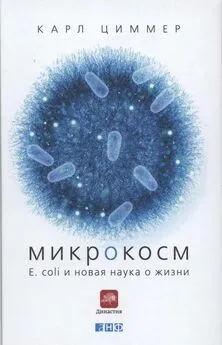

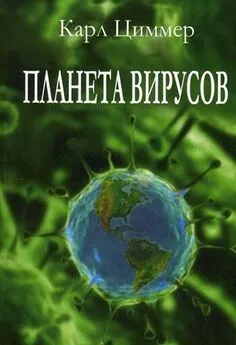
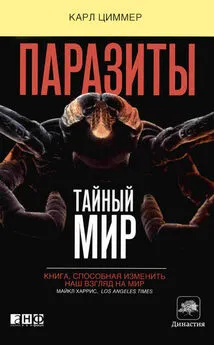

![Карл Циммер - Паразит – царь природы [Тайный мир самых опасных существ на Земле] [litres]](/books/1067054/karl-cimmer-parazit-car-prirody-tajnyj-mir-sam.webp)
![Карл Циммер - Она смеется, как мать [Могущество и причуды наследственности] [litres]](/books/1075049/karl-cimmer-ona-smeetsya-kak-mat-moguchestvo-i-pr.webp)
